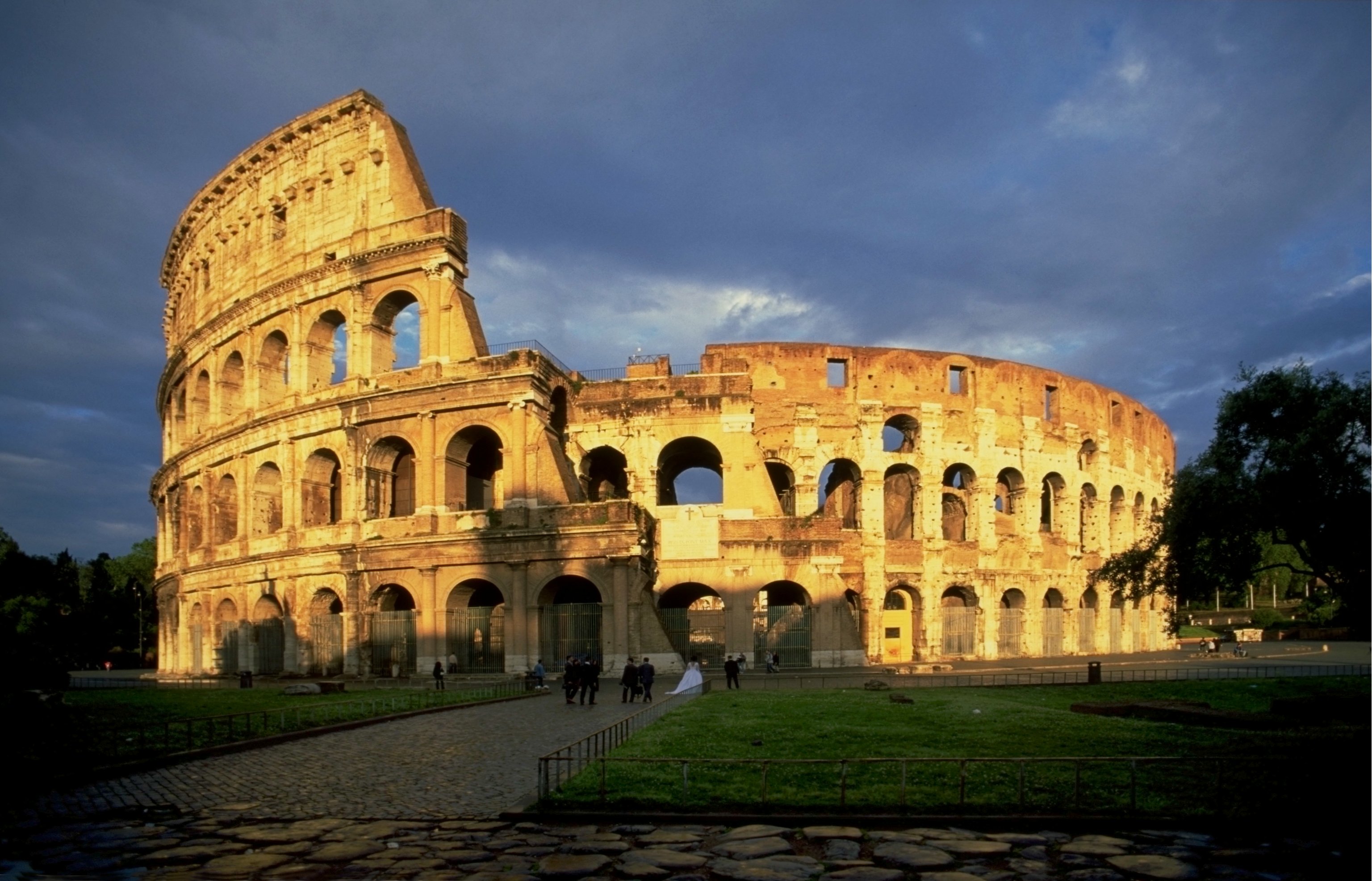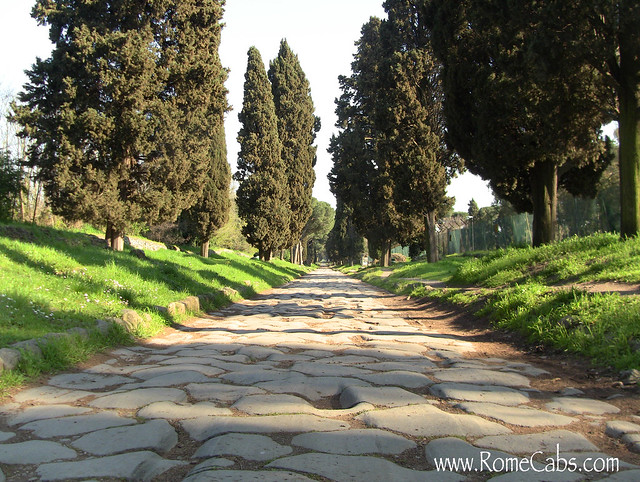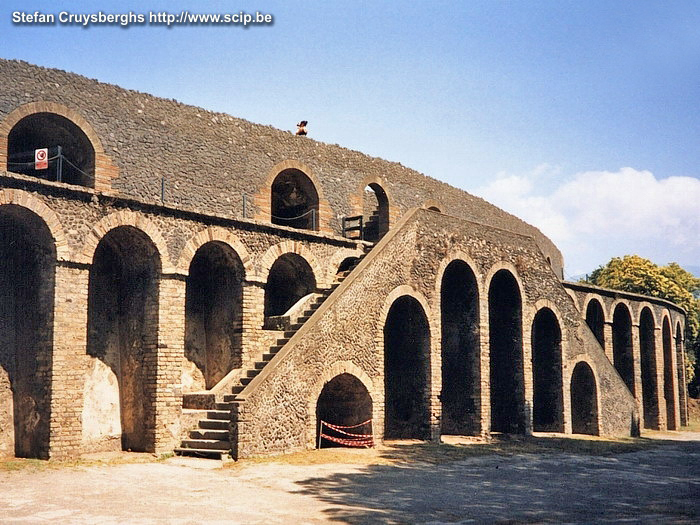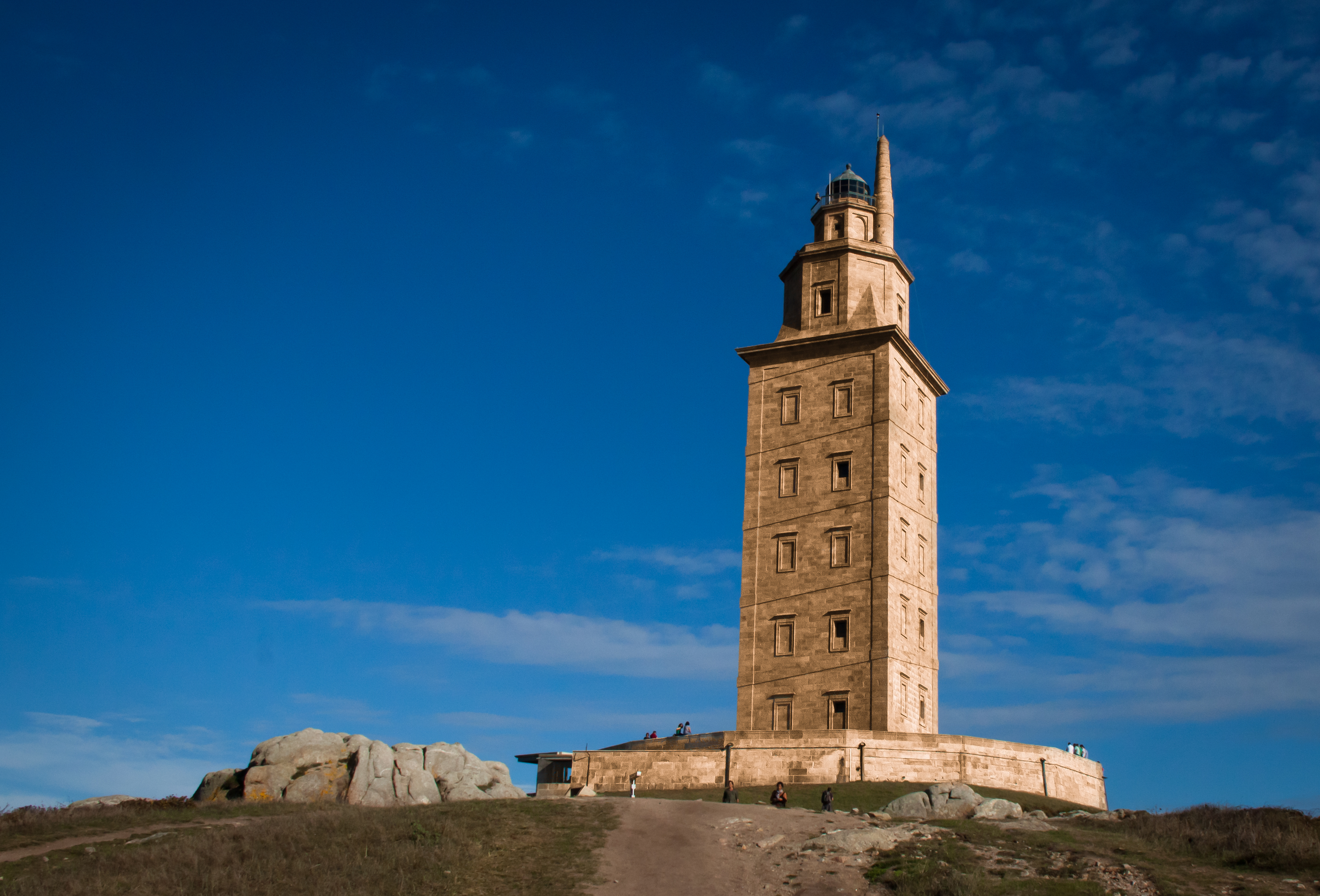 |
| Colosseum in Rome |
 |
| The Pantheon Andrew Wales, Flickr |
Roman engineers are probably most noted for first
incorporating concrete into their buildings. Concrete, interspersed with the Roman arch, gave their architecture an extraordinary beauty and sense of weightlessness, revived in the classical styles of the modern world. Though the Roman architects were at their height in a world we now call ancient, they were able to construct the Pantheon and top it with a un-reinforced concrete dome that remained the largest in the world for more than seventeen hundred years. Here is a list of some of the most beautiful and little known feats of Roman engineering that still remain (all images, unless otherwise noted, are from Wikimedia Commons).
The Appian Way in Southern Italy 312 BC
Amphitheater of Pompeii 80 BC
Pompeii is famous for being one of the cities that was covered with a layer of ash from Mount Vesuvius nearly two thousand years ago. It sits on the coast of Italy, halfway down the peninsula, not far from Naples. In its day, it was a rich and prosperous town. The citizens of the city and the surrounding areas may not have thought it was so great the day Vesuvius went off in 79 AD, but hundreds of houses and artifacts were almost perfectly preserved by the falling ash. Even loaves of bread were carbonized and are now displayed in museums. The amphitheater, just outside of town, is thought to be one of the first to be built of stone and is the oldest and best preserved amphitheater in the world.
Aqueduct of Segovia 1st century
The Romans were really fond of running water and their great
stone aqueducts created the required height for fountains to spring up in Rome.
But these aqueducts were about more than decorative fountains, or even
providing fresh water. There is evidence that they supported an industrial
revolution before the Industrial Revolution, when aqueducts like this one would
have run countless mills all over the Roman Empire.
Temple of Portunus in Rome 1st century
In this temple in Rome, we can see Greek influence. One reason why the Romans were so great is that they borrowed everything from everywhere. They adopted Greek dress, Greek habits, Greek plays and added the large assemblage of Greek gods to their already massive collection. The Greeks were great, but an inability to unify contributed to their demise at the hands of the Romans. The Romans never had trouble being organized.
House of Menander in Pompeii 1st century
Romans lived pretty much the same way we do today (minus the WiFi). The richer people lived in villas, while the poorer people lived in apartment buildings, or insulae, where they could rent a room from the landlord. Roman villas generally were built around a central garden with a fountain and covered walkway. The massive House of Menander in Pompeii was the abode of a merchant. The interior is decorated with lovely frescoes, some of the few remaining examples of Roman paintings.
Tower of Hercules in Galacia 90AD
In case you were wondering what a Roman lighthouse looks like, here's one. This one is nineteen hundred years old, which makes it the oldest operational lighthouse in the world. There was once one like it, towering in Cleopatra's day in Alexandria harbor, that was one of the Seven Wonders of the Ancient World. It was damaged when part of the city fell into the sea during an earthquake and today, the Citadel of Qaitbay stands on the foundations.
There was a great preference for physical fitness in the Roman culture. Gladiators had a similar position as modern day football stars and Roman body armor exaggerated muscles. Just like today, sports had a great significance in Roman times. Women participated as well, wearing things that looked like bikinis. The Gymnasium at Sardis, like most gymnasiums in those times, was attached to a bath complex where the athletes could take a dip. I suppose showers weren't invented yet.
Theatre at Palmyra 2nd century
The Romans loved their drama. They may not have been as prolific playwrights as the Greeks, but they enjoyed a good story every now and then, too. Think of Roman theaters as modern-day cinemas; every town that was worth its salt had one. They generally faced the sea (if there was sea to be had) so the incoming wind would blow the actors' voices up to the audience siting in the cheap seats. The acoustics are fantastic; the theaters were often elliptical so the sound had two focal points instead of only one.
Puente Trajan at Alcantara c. 104-106 AD
The Romans were the first to use arches in bridge
construction and managed to span even the Danube and the Rhine. Their bridge
building prowess was unmatched until the 19th century. Puente Trajan, as it's
name implies, was built during the reign of Trajan, and over the years, various
bits of it have been blown up to keep armies from crossing it. Fortunately, the
middle section is still original, but the bridge is now shorter than it was
when it was first completed.
Porta Nigra in Trier c. 186-200 AD
The Porta Nigra is the largest, and probably the best preserved, city gate north of the Alps. Although it served as one of four gates for the walled city of Augusta Treverorum in Germany, it was never completed. During the Middle Ages it was converted into a church, then Napoleon Bonaparte came along in the 19th century and ordered that it be reduced to the original Roman structure. He was fond of the Romans...see the Arc de Triomphe.
Portus Adurni in Portchester c. 3rd century
I know it looks like something out of a Medieval epic, but it's actually Roman. It's located in England and forms part of the chain of Saxon shore forts built to keep back the Saxon mercenaries that later took over most of Britain. Roman Britain is often thought of as a cultural backwater, a forgotten island on the edge of the known world where walls were built across the country to keep back the murderous Picts...but don't let these impregnable walls fool you, between Roman conquest in 43 AD and withdrawal in 410, Britain became a cultural center. There were elaborate bath houses and well-laid roads and Romanized Britons built mansions for themselves that had glazed windows, radiant heating, running water, mosaics and as many as seventy rooms. Really, that's not half bad.
Aula Palatina at Trier AD 306–337
I don't know about you, but I think this place looks like a 19th century mill building; it's actually sixteen hundred years old. It was built as a Basilica in a massive palace complex in Trier, Germany, to serve the same purpose as a forum in Rome; basically the place where lawmaking took place. Fortunately or unfortunately all the later redecorating on the inside was burned out during WWII and the original Roman mason-work is now visible.
Palace of Diocletian 4th century
You may plan for your retirement by downsizing; Emperor Diocletian did it the other way around. He commissioned this massive palace by the sea in what is now Croatia. After the Romans left the place, other people moved in, opening their businesses and building their homes directly into the foundations and in the walls. Today, the palace, and all its later additions, forms the center of the city of Split.
When Constantine I built this mausoleum for his daughter, the Roman empire had begun its shift East. We can see the roots of Byzantine architecture in the dome and simple arches, which is even more pronounced in the delicate columns in the interior. Rome was crumbling, but the architecture remained a blueprint for the coming generations. We can see echoes of it in the fairy-like Alhambra, the Romanesque style of the Middle Ages, and later in the Baroque style. It appears everywhere today, from capital buildings to libraries.


.jpg)









Wow, that was an interesting and informative post! I love stuff like this :D Hey, maybe you could do a post on the Antikythera Mechanism next. That is an incredibly fascinating device.
ReplyDeleteI'm so delighted you enjoyed the post! I think we've always been fascinated with Roman architecture. I was actually thinking of doing a post on clocks, the Antikythera Mechanism would fit right in. Thanks very much for the suggestion!
ReplyDelete~Psyche
I'm surprised no one else seems to notice your blog. It's really good :D
ReplyDeleteI'm so glad you like it! It's really nice of you to say that. ;) We're sort of using the blog as a diary of things we're interested in or learning about. There are a few people who have told me that they've subscribed, but you're the first to actually comment (other than my mother:) so thank you!
Delete